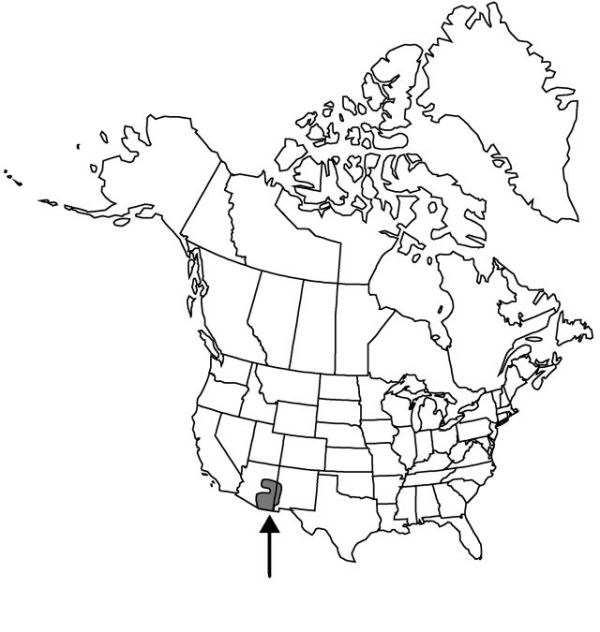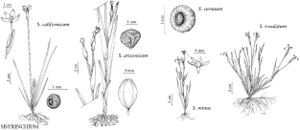Sisyrinchium arizonicum
Bot. Gaz. 2: 125. 1877.
Herbs, perennial, cespitose, dark olive to blackish when dry, to 6 dm, not glaucous; roots conspicuously fleshy-thickened. Stems branched, with 2–4 nodes, 3.5–8 mm wide, glabrous to scabrous, margins denticulate at least apically, similar in color and texture to stem body; first internode 14–27 cm, shorter than leaves; distalmost node with 1–2 branches. Leaf blades glabrous to scabrous, bases not persistent in fibrous tufts. Inflorescences borne singly; spathes green, obviously wider than supporting branch, scabrous or glabrous, keels denticulate; outer 30–55 mm, equaling or to 3.7 mm longer than inner, tapering evenly towards apex, margins basally connate 5–6 mm; inner with keel evenly curved or abruptly gibbous, hyaline margins 0.3–0.8 mm wide, apex acuminate or rounded, ending just proximal to green apex. Flowers: tepals yellow to orange, usually with brownish veins; outer tepals 11–23 mm, apex rounded to acute, aristate; filaments connate only basally, base glabrous or occasionally stipitate-glandular; ovary similar in color to foliage. Capsules black or blackish brown, obovoid to turbinate, 8–19 mm; pedicel erect to ascending. Seeds globose, lacking depression, 1.5–2.2 mm, rugulose. 2n = 34, 36, 72.
Phenology: Flowering mid–late summer.
Habitat: Moist meadows, stream banks, open places in coniferous forest
Elevation: 1600–3000 m
Distribution

Ariz., N.Mex., nw Mexico.
Discussion
Selected References
None.
